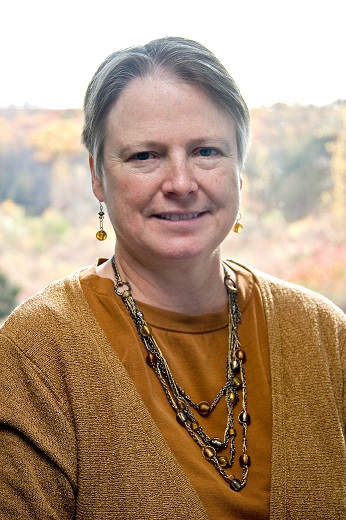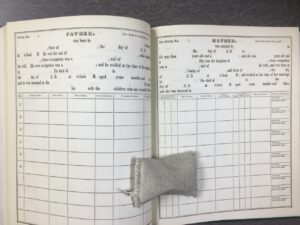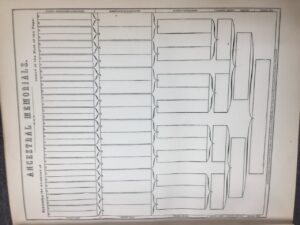Lemuel Shattuck founded the New England Historic Genealogical Society in 1845 with four of his Boston friends: Charles Ewer, Samuel Gardner Drake, John Wingate Thornton, and William Henry Montague.[1] The new society was incorporated for the “purpose of collecting and preserving the Genealogy and History of early New England families.”[2] In addition, the society solicited donations of books, family registers, Bible records, and newspapers and manuscripts related to the goals of the organization to be preserved at its headquarters in Boston. The Society received approval for incorporation on 18 March 1845 from the General Court of Massachusetts.[3]
Lemuel was born to John and Betsey (Miles) Shattuck at Ashby, Massachusetts on 15 October 1793. His family moved from Ashby to New Ipswich, just over the border in New Hampshire, before Lemuel was one year of age. He spent his childhood and adolescence in New Ipswich and neighboring towns. By his own account, he received little formal schooling, instead relying on “the school of mutual instruction, composed of his elder brothers and his sisters...”[4]
Between 1818 and 1822, he taught in Detroit, Michigan, returning to Massachusetts in 1823 where he taught from 1823 to 1833 in the town of Concord. He wrote his History of Concord during this time with publication in 1835.[5] He married Clarissa Baxter, the daughter of Daniel Baxter and Sarah White, at Boston, Massachusetts, on 1 December 1825. Clarissa and Lemuel had five daughters: Sarah, Rebecca, Clarissa, Miriam, and Frances.[6]
Shattuck became a bookseller in Cambridge, Massachusetts in 1834 and a publisher/bookseller in Boston in 1844, a career he maintained until his retirement. Throughout his career he was a tireless writer. In addition to teaching and publishing, Shattuck engaged in significant public service. In Concord he served on the school committee. He was elected to the Boston City Council in 1837, a position he held for five years. Later he served in the state legislature.
Shattuck loved forms. One of his major contributions to the field of genealogy was a set of forms to capture genealogical information about families.[7] See Figures 1 and 2 for his forms, which he published as A Complete System of Family Registration. He supervised the 1845 census of Boston, which unfortunately has not survived. In 1849 he worked with the Census Board in Washington, D.C., to revise the census forms to be used for 1850 U.S. Federal Census.[8]
He was an ardent advocate for public health. In 1841, he produced an analysis of the Bills of Mortality for the City of Boston.[9] He encouraged routine registration of births, marriages, and deaths for public health accountability, and secured passage of a law in 1842 initiating vital statistics registration in Massachusetts. And in 1850 he published a Sanitary Survey of the State, a “prophetic” work which became known as the Shattuck Report and laid the ground for future public health practice, locally, nationally, and internationally.[10]
His passions for analysis and preservation led him to campaign for the founding of the American Statistical Association (ASA) in 1839. The mission of the ASA was to collect, preserve, and diffuse statistical information in the different departments of human knowledge. A 1990 article celebrating the 150th anniversary of the ASA’s founding states that Lemuel Shattuck was the person most responsible for getting the ASA off the ground.[11]
Shattuck died at Boston on 17 January 1859 (listed cause of death – paralysis).[12] He is buried at Mount Auburn Cemetery in Cambridge with other members of his extended family.[13]
Notes
[1] https://www.americanancestors.org/about/history.
[2] “Circular Number Two of the New England Historic Genealogical Society,” April 1846. Manuscript in possession of NEHGS, accessed in November 2019.
[3] “Circular Number Three of the New England Historic Genealogical Society,” June 1847. Manuscript in possession of NEHGS, accessed in November 2019.
[4] Lemuel Shattuck, Shattuck Memorial (Boston: Dutton and Wentworth, 1855), 302.
[5] Lemuel Shattuck, A History Of The Town Of Concord, Middlesex County, Massachusetts: From Its Earliest Settlement To 1832 (Concord: John Stacy, 1835).
[6] Shattuck, Shattuck Memorial, 312.
[7] Lemuel Shattuck, A Complete System of Family Registration (Boston: William D. Ticknor, 1841).
[8] Shattuck, Shattuck Memorial¸ 306.
[9] Lemuel Shattuck, Report to the committee of the City Council appointed to obtain the census of Boston for the year 1845: embracing collateral facts and statistical researches, illustrating the history and condition of the population, and their means of progress and prosperity (Boston: John H. Eastburn, 1846).
[10] “Lemuel Shattuck (1793-1859): Prophet of American Public Health,” American Journal of Public Health 49 [1959]: 676–77.
[11] R.L. Mason, J.D. McKenzie, S.J. Ruberg, “A Brief History of the American Statistical Association 1839-1989,” The American Statistician 44 [1990]: 68–73.
[12] Shattuck, Shattuck Memorial, 312. See also “Massachusetts, Town and Vital Records, 1620-1988,” death of Lemuel Shattuck, online database viewed at Ancestry.com (image 5).
[13] Mount Auburn Cemetery (Cambridge, Massachusetts), online search for burials.
Share this:

About Ann Lawthers
Ann G. Lawthers assists our library patrons in enhancing their research skills and in bringing alive their family histories. She is a graduate of Wellesley College, the Harvard School of Public Health and has completed the Boston University Certificate in Genealogical Research program. She has conducted genealogical projects as an independent researcher. Ann is familiar with resources for Massachusetts, Vermont, Pennsylvania, Maryland, New Jersey; and has research experience with Quebec and the Canadian Atlantic Provinces, Ireland and Germany.View all posts by Ann Lawthers →

